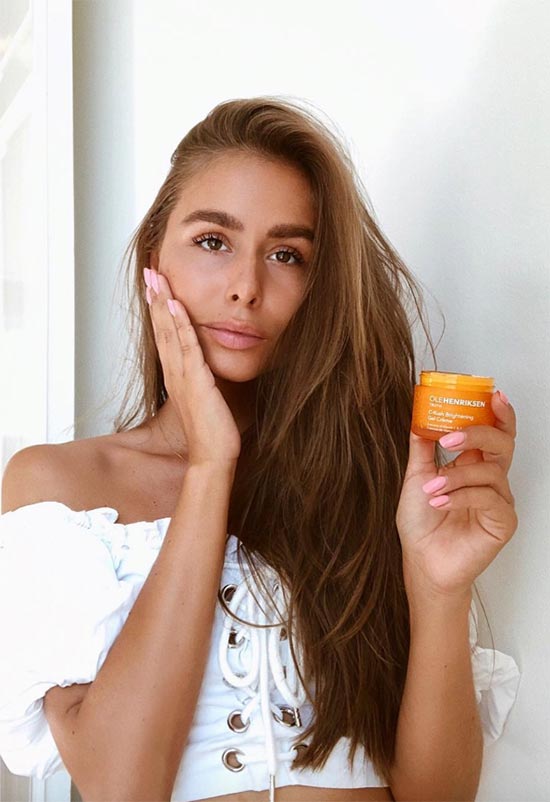Hyperpigmentation is one of those annoying skin conditions that almost everyone has to deal with, whether we’re talking about dark spots, scarring, or even something as benign (and cute) as freckles. That’s why I think it’s so important to understand the different hyperpigmentation causes and how to treat hyperpigmentation safely and effectively.
I always write from a place of love for differences and diversity, so I think it’s important to know that hyperpigmentation is not by itself something bad – birthmarks and freckles are a type of hyperpigmentation, but they are also super cute! However, they are also something that can turn cancerous easily, so proper care and knowledge are very important!
In this article, I’ll work my way through everything you need to know about hyperpigmentation and dark spot removal, including hyperpigmentation causes, and the different kinds of hyperpigmentation. Armed with so much knowledge you can kiss those dark marks goodbye!
In this article:
- What Is Hyperpigmentation?
- Types of Hyperpigmentation
- Hyperpigmentation Causes
- Hyperpigmentation vs. Melasma
- Post-Inflammatory Hyperpigmentation vs. Post-Inflammatory Erythema
- At-Home Skincare Routine to Treat Hyperpigmentation
- Salon Dark Spot Removal Treatments
- Medical Intervention to Remove Dark Spots
- Home Remedies for a Quick Dark Spot Removal That Actually Help
- Dangerous DIY Hyperpigmentation Treatments to AVOID
- Hyperpigmentation Prevention
- How Long Do Hyperpigmentation Treatments Take to Work?
What Is Hyperpigmentation and What Is the Process That Causes It in the Skin?
To put it simply, hyperpigmentation is overproduction of pigment in the skin. Almost everyone’s skin produces melanin, which is what gives our skin color, and some people’s skin produces more melanin than others’ (hello diversity!), but it becomes a cosmetic issue when the melanin production is uneven. When melanin is overproduced in only specific spots it becomes an issue because the skin looks uneven.
Melanin is produced in the skin by special cells called melanocytes, which live in the lowest layer of the epidermis. As our skin cells multiply, pigmented skin cells are pushed up from the lower layers of the epidermis up unto higher ones. This is why sometimes hyperpigmentation can show up after exfoliation started – it was there all along, but simply at a lower level of the skin.
The main purpose of melanin is to protect the skin from UV radiation by absorbing it and preventing it from reaching lower levels of skin. This is why exposure to UV damage increases the activity of the melanocytes and causes the skin to turn darker.
Hyperpigmentation occurs either when melanocytes are clustered together too closely, or when a few of them begin to misbehave and overproduce melanin.
Types of Hyperpigmentation
There are a few different types of hyperpigmentation that can appear due to a few different reasons.
- Freckles, also known as ephelides. These lovely little dots are actually quite in style these days, but beware – too much sun exposure and some bad luck can turn these guys into dangerous melanoma (a.k.a. skin cancer).
- Sun spots (or the less sexy name liver spots) are technically called solar lentigines. These pigmented patches have a clearly defined edge, and they are primarily caused by sun exposure. There is a high danger of liver spots becoming cancerous, so be attentive and have them checked by a specialist on a regular basis. These kinds of sun spots, especially when they are darker, are best treated with a combination of skin care and laser treatments.
- Melasma and chloasma are a type of hyperpigmentation caused by hormones, especially during pregnancy. It looks like brown patches, usually with a less distinct border, and it tends to get darker with increased sun exposure.
- Post-inflammatory hyperpigmentation (PIH) is the proper name for brown acne scars, although it can also show up after other kinds of injury or burns have occurred. Much like other kinds of hyperpigmentation, the sun’s rays will make PIH turn darker.
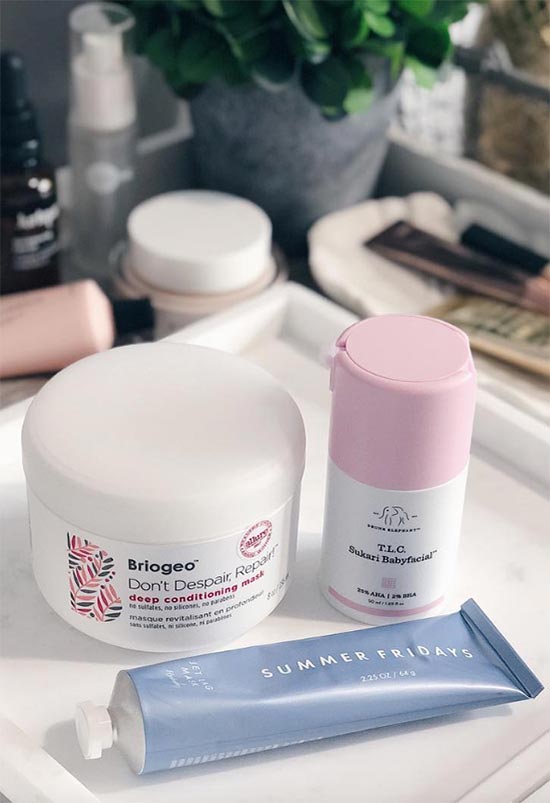
Hyperpigmentation Causes
There are many different things, both internal and external, that can cause hyperpigmentation. Very often it’s not a single factor but a few factors combined that cause or exacerbate dark spots. Remember that as you read the list.
Sun Exposure
Sun exposure almost always plays a part in hyperpigmentation, because unless you’re a vampire it’s likely that your skin has been exposed to UVB rays. When the sun’s rays touch the skin, they very quickly begin causing damage, and the skin in turn tries to protect itself by producing more melanin.
Over time and with regular exposure this can lead to a more diffused darkening of the skin or to dark spots. Sun exposure can also increase the darkness of hyperpigmentation caused by other things.
Wearing face sunscreen regularly will significantly decrease your chances of having to deal with hyperpigmentation, and it will also prevent existing pigmentation from getting worse!
The Genetics Factor
Genetics can also play a role in hyperpigmentation, with some people being more prone to hyperpigmentation than others due to family history. Birthmarks caused by a concentration of melanocytes are a kind of hyperpigmentation that we’re born with, so they’d also count as genetic.
Lastly, there are genetic diseases, especially ones that influence hormone production that can cause hyperpigmentation including celiac, Addison’s, Cushing’s, thyroid disease etc. Genetic causes of hyperpigmentation often require the help of more extreme hyperpigmentation treatments like laser.
Pollution!
Increasingly we’re learning that pollution can also cause dark spots in the skin! There are these pesky compounds called Polycyclic Aromatic Hydrocarbons that are largely present in things like cigarette smoke and car exhaust fumes that have been shown to increase melanin production in the skin of mice by causing oxidative damage.
It’s very fair to guess that if you’re a human living in a smoke-filled environment, you are also at a higher risk for pigmentation. Using skincare products rich in antioxidants can help mitigate the damage, so they’re a must if you live in a bustling city or if you’re exposed to a lot of smoke.
Aging
Aging is partially a cause of dark spots, but more importantly, as we age, our skin (and our bodies in general) start to show the damages of a lifetime lived. Years of sun or pollution exposure can take a long time to manifest as age spots or liver spots.
At the same time, as we age, the size of our melanocytes tends to increase, and the melanin production itself tends to not be as well regulated as it used to be in our use. A lifetime of sun protection and great skin care will help prevent age spots, and in the post, we outline all the best hyperpigmentation treatments that will help diminish these dark spots after they’ve appeared!
Scarring
Scarring is another very common cause of hyperpigmentation. Once skin has been severely damaged, it can’t always bounce back perfectly, so we often end up with pitted, raised, or pigmented scars after getting injured.
Any trauma or injury to the skin can cause hyperpigmentation, but the most common causes are acne (which leads to a kind of hyperpigmentation called post-inflammatory hyperpigmentation, or PIH), and burns (including burns caused by sun exposure, acids, or heat).
Once the skin has been injured in some way, the key to preventing pigmented scars is to let the skin heal as well as possible. By keeping things wrapped up and well moisturized the skin will heal in no time and with reduced chances of a visible scar.
Once the hyperpigmentation exists, however, using the dark spot treatments I recommend will certainly help clear things up!
Hormonal Changes
There are hormonal changes that can cause dark spots and pigmentation. These include the mask of pregnancy, which usually manifests as brown patches on the skin, especially around the forehead, cheeks, and mouth. It is referred to somewhat interchangeable as melasma and chloasma, and is caused by the hormonal fluctuations that occur during pregnancy.
Estrogen and progesterone, hormones that spike during pregnancy, stimulate the melanocytes and cause increased melanin production in the skin. This kind of skin darkening can also be caused by hormonal birth control, by some diseases, and it can also occur when women are premenopausal.
Most of the time the combination of hormonal fluctuation and sun exposure is what causes this kind of hyperpigmentation, so wearing sunscreen and avoiding the sun are important counter-measures. After the fact, the traditional dark spot erasers that I recommend will help tremendously.
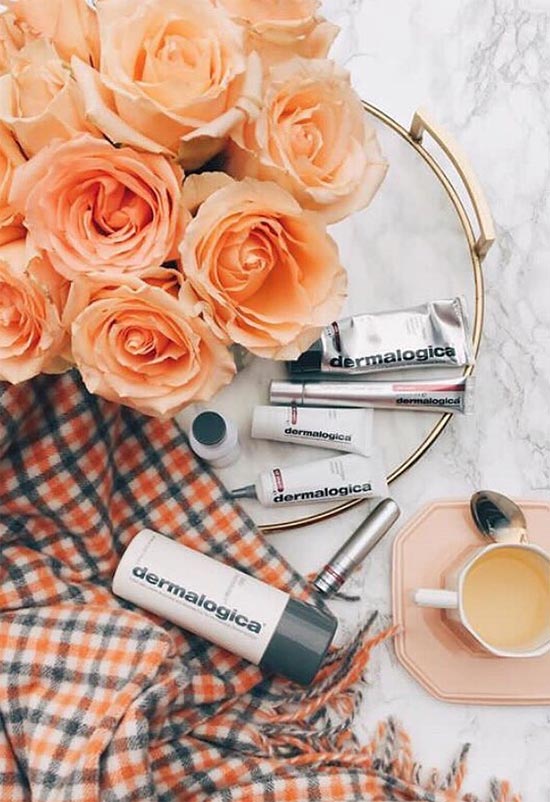
Certain Medications
Medications and drugs can also cause hyperpigmentation. I’ve already mentioned birth control, but the truth is that any medication that influences hormone production can have hyperpigmentation as its side effect.
Other medications that can cause hyperpigmentation include cytotoxic drugs, anti-inflammatory drugs, anti-malarials, anticonvulsants, and more. It’s important for you to research the possible side-effects before taking any drug, although usually hyperpigmentation is the least concerning side effect.
Sometimes (like in the case of antipsychotics and amiodarone) the pigmentation has a blue-grey tinge, in which case it often occurs because the drugs make the skin photosensitive (more sensitive to the sun’s rays). Wearing sunscreen will help reduce your chances of getting hyperpigmentation from a drug.
Hyperpigmentation vs. Melasma: What’s the Difference?
Hyperpigmentation is the umbrella term that talks about any localized darkening of the skin, so you guessed it – melasma actually falls under the hyperpigmentation umbrella! It is often referred to as “the mask of pregnancy” and it is somewhat interchangeable with the term “chloasma.”
Melasma is different from other types of hyperpigmentation because it’s caused by the hormones secreted during pregnancy rather than external concerns like sun exposure. That said, the sun’s rays are a fierce and powerful element that makes melasma worse.
This particular brand of hyperpigmentation can also occur because of diseases or medications that increase estrogen and progesterone in the body, with birth control pills being a very common culprit.
Post-Inflammatory Hyperpigmentation vs. Post-Inflammatory Erythema
Post-inflammatory hyperpigmentation is quite a mouthful, so we can call it PIH instead. PIH is hyperpigmentation that occurs after the skin has been irritated and inflamed – namely, after a breakout. PIH is a type of acne scarring that can fade away on its own, although all kinds of dark spot treatments can help speed up its healing.
People often make a mistake by comparing PIH to PIE, or post-inflammatory erythema. PIE is long-lasting redness that occurs after acne itself has faded. It is not caused by melanin, but instead it is caused by dilated blood vessels. This means that treating it is a totally different process.
The best way to treat PIE is with V-beam laser treatments, which are quite expensive, although things like silicone sheets, niacinamide, and vitamins are also said to help. Lastly, keeping the skin healthy and moisturized will help with both skin issues!
Best Hyperpigmentation Treatments
The best hyperpigmentation treatments fall into a few categories – typical cosmetic products you’d use at home, salon procedures, and medical care. Mixing all three will give you the quickest results, and of course, within each category you have different options for products, procedures, and medications.
I’ll give you the lowdown on all the different dark spot treatments and how they work, so you can figure out what will work best for you!
At-Home Skin Care Routine to Treat Hyperpigmentation
What you do at home every day will have the greatest impact on your skin! That is why a great skincare routine is critical for improving hyperpigmentation and dark spots. I’ll be outlining a full skincare routine here, but the three things that have an impact specifically on hyperpigmentation would be the following:
- An exfoliant, preferably a chemical one. The exfoliant will help remove damaged or pigmented skin, and will also promote the regeneration of new, healthy skin cells and brighter-looking skin. This is best in the form of toner or serum, and should be acid-based. The best acids for skin care are glycolic acid, salicylic acid, lactic acid, kojic acid, and mandelic acid. Other acids, like hyaluronic acid or azelaic acid, while fantastic for the skin, are not exfoliating.
- An active ingredient (or a few) that’ll reduce melanin production. These active ingredients work by helping to inhibit or regulate melanocyte behavior to prevent them from over-producing melanin. The most effective of these ingredients is hydroquinone, but it’s also controversial because it can penetrate into the bloodstream. It is not available for sale in Europe. The next popular choice is vitamin C, often paired with other skin brighteners like niacinamide, licorice root extract, azelaic acid, and onion extract.
- Sunscreen is absolutely mandatory to protect and prevent further damage and hyperpigmentation. All efforts to fade hyperpigmentation are totally worthless if the skin keeps experiencing the same damage that causes the pigmentation. Most effective skin-brightening products make the skin a bit more sensitive to the sun, so sunscreen with at least 30 SPF becomes doubly important.
Now let’s see how all of these are integrated into an at-home skincare routine.
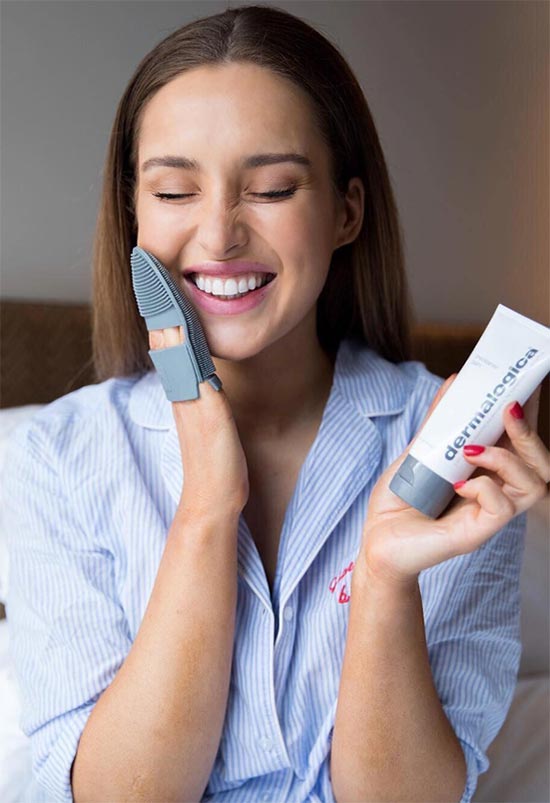
Morning
- Begin by either cleansing your skin with a gentle, low-pH cleanser, like the CosRX Low Ph Good Morning Gel Cleanser from Ulta, or simply splashing it with water if you’re not too oily.
- Apply a vitamin C-based skin-brightening serum. Vitamin C has to go on the skin first because it is active at a low pH. Vitamin C is one of the best ingredients for reducing dark spots and pigmentation in the skin, and it also has some powerful anti-aging properties. Since vitamin C controls melanin production, it can be safely applied all over the skin.
- Apply a chemical exfoliant to your skin that is appropriate for daily use. This can be a product with up to 2% BHA (a.k.a. salicylic acid) and up to 15% AHA (a.k.a. glycolic, lactic, or mandelic acid). It can take the form of a serum or toner.
- Apply your skin-brightening serum or lotion that is non-pH dependent. The most powerful ingredient in this kind of product would be hydroquinone, but it’s also a fairly controversial ingredient. You can choose to limit your use of it by only applying it to pigmented spots, or you can use a serum with other skin-brightening ingredients, like azelaic acid, niacinamide, or licorice root extract. This step is optional if you’re already using a vitamin C serum.
- If necessary, apply additional hydrators – either more serums, or a facial moisturizer.
- If your moisturizer doesn’t have an SPF, make sure to use a broad-spectrum sunscreen with at least 30 SPF to prevent any further damage. If you’re going to be spending time outdoors, make sure to reapply sunscreen every two hours!
Evening
- Cleanse your skin to remove any makeup, sweat, and the sunscreen from earlier in the day. Once again, a cleanser with a low pH is preferred.
- If you’ve applied vitamin C in the morning you can skip it in the evening. Otherwise, apply your vitamin C serum. For an extra boost, you can use dermarollers with it a few times a week. The dermarollers will help stimulate collagen and elastin repair in the skin, and will also allow the vitamin C to penetrate more deeply into the skin.
- Apply any chemical exfoliants you like for nighttime. Some people like BHA in the daytime and AHA in the evening or vice versa.
- Apply your non-pH-dependant actives. Evening is generally considered the better time to apply retinol and other vitamin A products to the skin.
- Finish off with hydrating products, like a hyaluronic acid serum, and your moisturizer of choice.
- If your skin leans especially towards dry, you can seal the deal with an overnight skin-brightening treatment or a heavy balm to lock everything in.
Weekly Treatment – 2 to 3 Times a Week
- Cleanse your skin with a low-pH cleanser.
- Use either a physical exfoliant or (preferred) a strong acid based peel. If you use a scrub, simply rub into the skin and then rinse. If using a peel, apply a very thin layer to the skin with a clean brush or cotton pads. Allow it to sit on your skin (it may tingle!) for about 10 to 15 minutes.
- Rinse away the peel with cool water and cotton pads or a face cloth. You might need to use a neutralizing solution, depending on the type of peel you’ve used.
- Next apply a skin-healing and brightening mask, like one of the masks recommended in our list of the best dark spot correctors. After 15-20 minutes rinse it away.
- Finish off with a skin-brightening treatment. Vitamin C and other skin-brighteners are fine, but avoid any acid-based serums or lotions.
- Apply your moisturizer and you’re good to go!
A note on exfoliating: A chemical exfoliant is the better option when it comes to hyperpigmentation treatments. You can use a chemical exfoliant either daily, at a lower percentage, or on a weekly basis at a higher percentage.
Depending on your skin, you could even use both a weekly and daily chemical exfoliant, although be careful not to overuse and burn or damage your skin. Some people like a combination of chemical and physical exfoliants, as well. Generally, the more your skin sheds itself, the faster existing dark spots will fade away.
A note on serums: There are many serums that include a combination of the actives I recommend, many of which are present on the list of the best dark spot treatments. In that case, one serum takes the place of 3 and will really cut down on how long your routine takes!
Salon Dark Spot Removal Treatments
There are many different kinds of treatments you can undergo that will help speed up the fading of hyperpigmentation, especially if you pair them with a great at-home skincare routine.
I will list them in order of intensity, but also make sure that the in-salon treatments you choose work well with your at-home routine by speaking to your aesthetician first.
Acid Peel Facials
These facials utilize glycolic, salicylic, lactic, or any other acid you might also be using at home, but at a higher percentage than what you could find by yourself. At a good salon, this kind of treatment would include a facial cleansing, application of the acid peel, application of a face-brightening face mask, and then will end with all kinds of serums and moisturizers.
With the help of the acids, dead skin will be forced to shed itself, which will allow new skin cells to reproduce more quickly and will remove damaged and pigmented skin. These professional strength peels are a great choice if you’re not comfortable with doing weekly peels at home, or if your skin tolerates a lot of exfoliation.
Microdermabrasions or Dermaplaning
I’ve combined these two because they’re both in-salon physical exfoliation treatments. These can be an especially good choice because they give a much more thorough manual removal of dead skin cells than you can get at home.
During one of these treatments your skin will be cleansed, manually exfoliated with a microdermabrasion wand or a dermaplaning tool, rinsed, masked with a brightening masked, and then hydrated and moisturized with all kinds of products.
Since acid-based exfoliants penetrate through the top layers of skin and trigger shedding from below, you can think of microdermabrasions or dermaplaning as the cleaning treatments that remove those skin cells from above. A mix of physical and chemical exfoliation is the best way to achieve quick dark spot removal.
Dermarolling or Microneedling
Dermarolling, also known as microneedling, is a procedure that can be done both at home as part of your skincare routine or in a salon.
During this procedure a roller ball with little needles is rolled over the skin. The needles cause very mild trauma – the kind that doesn’t actually damage the skin, but instead triggers its repair mechanisms, thereby fixing all kinds of damage including hyperpigmentation.
Afterwards, any serums and lotions better penetrate into the skin and are better able to reach the melanocytes. This means that skin-brightening ingredients like vitamin C become significantly more effective.
Led Light Therapy
Available for both at-home uses and in-salon treatments, led light therapy not only targets aging skin, but also removes hyperpigmentation and scarring caused by acne.
During the procedure, infrared lights are emitted on the surface of the face promoting collagen and elastin production, eliminating signs of aging skin, rosacea, and pigmentation.
Medical Intervention to Remove Dark Spots
It’s never ever a bad idea to go see a dermatologist when it comes to your skin! With hyperpigmentation it’s especially important, because a dermatologist can inspect your dark spots and let you know if any of them are at risk of becoming skin cancer.
While most solutions for hyperpigmentation are available over the counter, a dermatologist can give you more intense versions.
- Prescription Topical Creams: There are a few different kinds of topical medication that can help with hyperpigmentation. Retin-A (a.k.a. tretinoin) is a very popular choice because it increases cell turnover, thereby eliminating dark spots, and it’s also great for preventing signs of premature aging as well as for treating acne. Its weaker version, retinol, is available over the counter. A similar though much more gentle potentially prescription is azelaic acid, which is also a great treatment for rosacea. The next popular choice is hydroquinone, which is available at up to 2% over the counter. A dermatologist can prescribe a higher percentage of hydroquinone that will work faster to brighten the skin and totally get rid of hyperpigmentation.
- Laser Treatments: Laser is the strongest of hyperpigmentation treatments, and its price certainly reflects that. There are many different kinds of laser treatments, although across the board they tend to be better for darker, more localized dark spots than for the more diffused melasma or post-inflammatory hyperpigmentation. It also tends to work better for those with fair skin. Laser treatments should always be done by a doctor or nurse, as someone with less training can burn the skin and cause worse hyperpigmentation. Your doctor will be able to tell you which kind of laser treatment will be best for you, with options like: Intense Pulse Light Therapy (IPL), ablative, and non-ablative.
Home Remedies for a Quick Dark Spot Removal That Actually Help
Mixing up your own home remedies for skin can be fun and useful! While all these recipes and DIY dark spot treatments are not a replacement for a proven cosmetic treatment, they can speed things along and make you feel pampered in the process!
Always remember when trying to concoct your own at-home skin care that you’re not making a long-lasting product – you’re making something that you’ll use right away! Otherwise, you risk introducing some icky bacteria to your skin and causing all kinds of havoc.
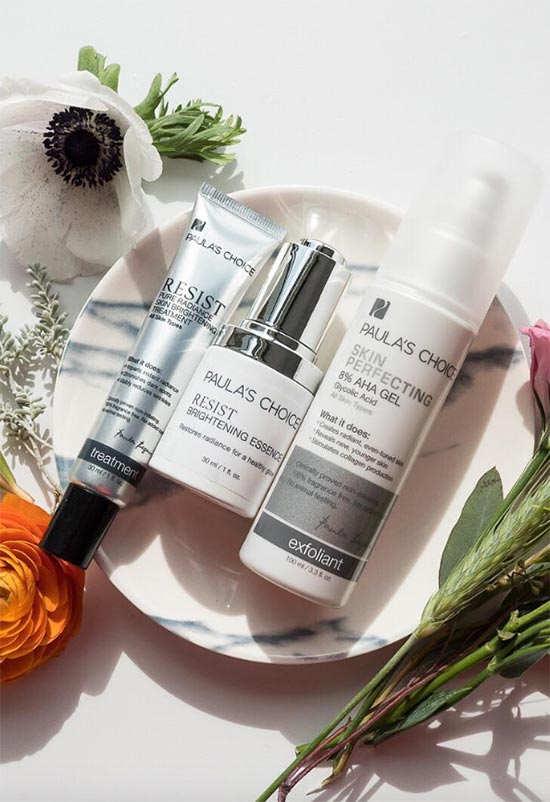
Yogurt Dark Spot Removal Facial
Yogurt is loaded with good bacteria and lactic acid. While we don’t know exactly how well it can exfoliate, it certainly softens and strengthens the skin, which is great for helping it along. You can mix it with some honey for added hydration.
Rosehip Oil
Rosehip oil is one of my favorite skincare oils, because it works for just about everyone! Loaded with beta-carotene and just a hint of tretinoin, it can speed up skin cell renewal, which helps with quick dark spot removal.
Simply mix a little bit of rosehip oil with some of your moisturizer, or even use it on its own.
Rice, Oeatmeal or Chickpea Flours
Rice, oatmeal or chickpea flours are all excellent choices for an at-home face scrub. By regularly removing that dead skin build-up you help remove pigmented skin and clear the way for healthy and new skin cells.
Mix a bit of your choice of flour with water, facial cleanser, or your favorite oil (sunflower is great for oily skin, while olive oil can work for dry skin), and rub into the skin in gentle circular motions. This leaves your skin bright and fresh!
You can purchase the flours, or make them yourself by grinding up your chosen ingredient in a food processor or coffee bean grinder.
An Aspirin Facial
Aspirin won’t do exactly the same work as one of the many BHA-laden serums I’ve recommended, but if you’re feeling the need to do something special, an aspirin mask won’t hurt. Aspirin, of course, is the commercial name for acetylsalicylic acid, which has and anti-inflammatory effect on the skin along with potentially something exfoliating power.
Simply crush some aspirin and mix it with water. Let it sit on your skin for 20 minutes or so (after cleansing and before doing the rest of your routine). Rub it in for a touch of physical exfoliation, and it should help clear up hyperpigmentation a touch more quickly.
DIY Vitamin C Serum to Remove Dark Spots
To finish off, this is the most demanding but also most effective at-home remedy for dark spots: a DIY vitamin C serum. This recipe will last you for up to two weeks, as long as you keep the bottle in your mini fridge.
You can prepare your own DIY vitamin C serum with the following ingredients: pharmaceutical grade ascorbic acid powder (100% vitamin C), distilled water, and baking soda. You’ll also want pH strips to check the acidity of the serum.
First add vitamin C to the container (you want it to be around 10% of the formula – this would be 3 grams of vitamin C if you use a 30 ml container, followed by the distilled water. Shake it up to melt the vitamin C.
Test the pH of the formula, and if it is below 3, add a bit of baking soda. You want your final product to have a pH of between 3 and 4.
If you have created your serum in a clear container, wrap it up in aluminum foil to protect it from exposure to light. Use your new vitamin C serum as you would any other vitamin C serum!
Dangerous DIY Hyperpigmentation Treatments to AVOID
When you look up home remedies for dark spots, a lot of the things you stumble upon could actually cause serious issues. Just because something is fine to eat it doesn’t mean you should put it on your skin, so tread carefully when browsing Pinterest for hyperpigmentation treatments.

Lemon juice is the worst offender. A lot of online recipes say that because of the citric acid in the lemon juice it will work effectively as an exfoliant. This isn’t true – the pH of lemon juice is simply too high to do anything other than irritating the skin.
Lemon juice is also phototoxic, which means that it will make the skin more sensitive to the sun. In other words, the very thing that is supposed to fix your hyperpigmentation could actually make it worse! Vinegar, similarly, can also seriously irritate the skin, and yet it is regularly recommended.
Baking powder, on the other side of the spectrum, can damage the skin by destroying its acid mantle, because its pH is simply too high for human skin. Make sure to avoid using it at all costs!
There are other treatments that are often suggested for dark spot removal that are not harmful, but simply won’t help with this particular issue. Those include aloe vera (which is nice and hydrating, but won’t help with dark spots), tomato juice, castor oil, almond oil, and, to be honest, most of the suggestions online.
Hyperpigmentation Prevention
An ounce of prevention is worth a pound of cure. It is much much easier to prevent hyperpigmentation in the first place than it is to deal with it once it’s already there.
As much as I love the feeling of the warm sun, it’s unfortunately not great for the skin. The key to preventing hyperpigmentation is to avoid sun exposure! This means you absolutely must wear sunscreen (at least a ¼ teaspoon to cover the whole face!) if you are going to be spending time outside or near windows – even on cloudy days!
Sunscreen should always be reapplied after two hours of sun exposure. Additionally, wearing hats or carrying a parasol will also help prevent hyperpigmentation by limiting your sun exposure. Doing this will help prevent sun spots, freckles, as well as melasma. It will also prevent hyperpigmentation caused by other factors like medication, scarring, or hormones from getting worse.
The other common cause of hyperpigmentation is scarring, including acne scars. I know it’s easier said than done, but try to prevent acne scars by making sure not to pick at active breakouts. Instead, use a salicylic acid-based spot treatment to allow them to fade on their own.
If you have picked at your skin, or if you’re worried about hyperpigmentation from a different kind of injury like a burn or cut, don’t worry – there is still something to be done! This kind of hyperpigmentation is called post-inflammatory hyperpigmentation, so it follows that by allowing the inflammation to go away as quickly as possible, preventing dark spots from showing up. You can do this by keeping the freshly broken or burned skin well moisturized.
Silicone creams are generally considered the best for this job, but even vaseline will do. White willow bark extract is a phenomenal anti-inflammatory ingredient that will also help reduce redness, pain, and irritation. If you really allow your injury to heal, the chances of dark spots will be greatly reduced!
How Long Do Hyperpigmentation Treatments Take to Work?
At this point it has already become an aesthetician cliche, but it still rings true: skin issues that built up over years of neglect are going to take a long time to correct. That’s why you shouldn’t expect years of sun damage to go away in the blink of an eye, and with the help of just one skincare product.
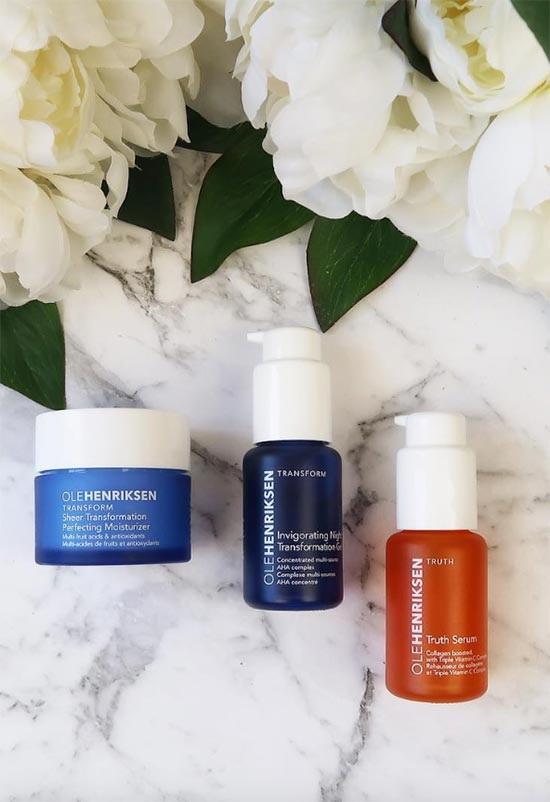
Assuming you’re targeting hyperpigmentation full force with regular exfoliation along with the powerful skin brightener hydroquinone, you can expect to start seeing changes in as little time as a month. However, a lot of people choose to avoid hydroquinone due to concerns that it might be carcinogenic. It is not recommended for pregnant women to use.
If you’re using other skin brighteners like vitamin C, niacinamide, or licorice root extract instead, expect visible results to take longer to appear. Anywhere between two to six months is a perfectly standard amount of time to have to wait to see results.
The fastest results, of course, occur with the help of a dermatologist and powerful laser treatments. However those are not available to everyone, so just be patient!
Photos via @mariakragmann, Instagram

